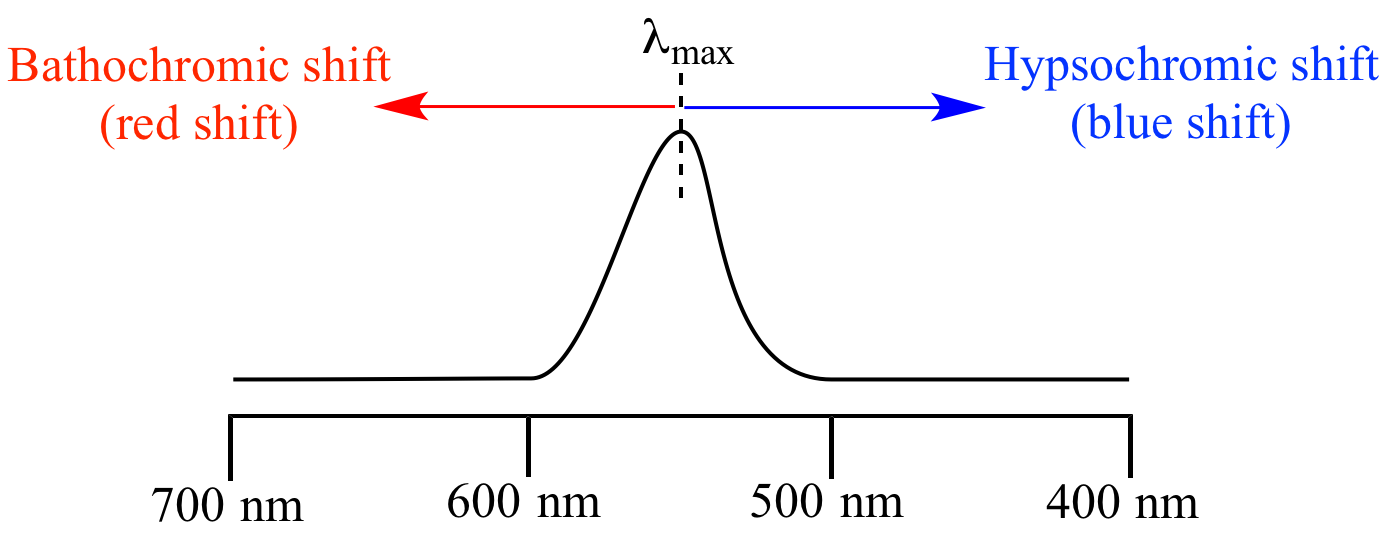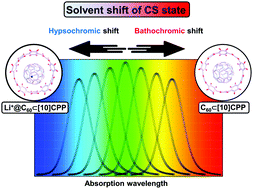| Previous Topic | Return to Absorption and Emission Menu | Next Topic |
Terminology for absorption shifts

Changes in chemical structure or the environment lead to changes in the absorption spectrum of molecules and materials. There are several terms that are commonly used to describe these shifts, that you will see in the literature, and with which you should be familiar.
Previously, the authors examined the UV-visible absorption spectral profile of hemoglobin (Hb) in dried bloodstains of different ages and identified a hypsochromic shift (blue shift, shift to shorter wavelength) of the HbSoret band that demonstrated a high correlation with TSD. Hypsochromic shift or blue shift In a similar way, shift of λmax to the shorter wavelengths is termed as hypsochromic shift. This shift results when the energy gap between HOMO and LUMO is increased due to any situations like stabilization of HOMO. Quick Reference An increase in the absorbtion of ultraviolet light by a solution of DNA as these molecules are subjected to heat, alkaline conditions, etc. The shift is caused by the disruption of the hydrogen bonds of each DNA duplex to yield single-stranded structures. From: hyperchromic shift in A Dictionary of Genetics ».
Hypsochromic Shift Is Also Called
- Bathochromic: a shift of a band to lower energy or longer wavelength (often called a red shift).
- Hypsochromic: a shift of a band to higher energy or shorter wavelength (often called a blue shift).


- Hyperchromic: an increase in the molar absorptivity.
- Hypochromic: an decrease in the molar absorptivity.
Solvatochromism
If as substance shifts to a lower energy state with a longer wavelength, it is referred to as a Bathochromic shift or (also called) red shift. The color will move more toward the red. Conversely, something that moves to higher energy will be referred to as a hypsochromic shift. If there is an increase in the absorptivity or cause the spectrum to become more intense, it will be referred to as a hyperchromic shift. But a decrease is referred to as a hypochromic shift. There is a variety of factors that can cause these changes. One of the factors is found in a process known as solvatochromism. This explains why certain molecules can, in a profound way, look very different in terms of their color depending on whether the molecules are in a polar or non-polar solvent.
Solvatochromism is the property of a molecule changing its color as a function of the solvent polarity. But it is actually more complex than that. It can be related to the solvent polarizability as well. Basically it is the change in the color of a material, or change in the spectrum, as a function of the dielectric properties of the solvent. The dielectric properties of the solvent have polarizability and polarity built into them. Therefore, if molecules go from a less polar solvent to a more polar solvent and a red shift or a bathochromic shift occurs, then the substance is referred to as being positively solvatochromic. Conversely if you put molecules into a more polar solvent and a blue shift occurs, i.e. higher energy, the molecules are referred to as being negatively solvatochromic.
Hypsochromic Vs Bathochromic
| Previous Topic | Return to Absorption and Emission Menu | Next Topic |
